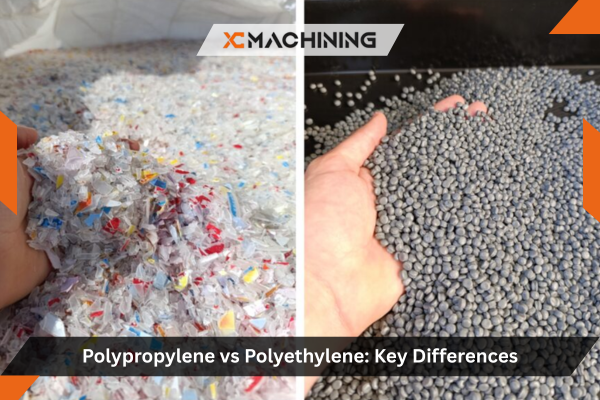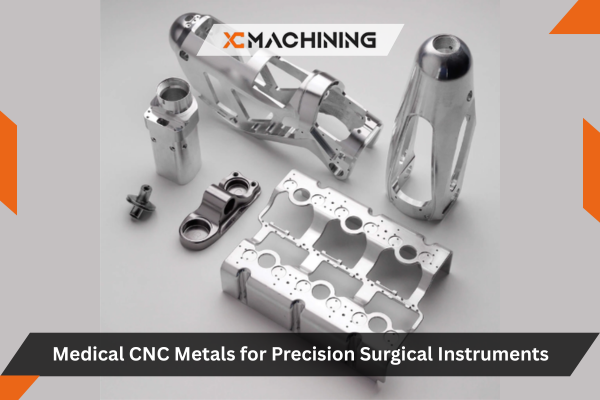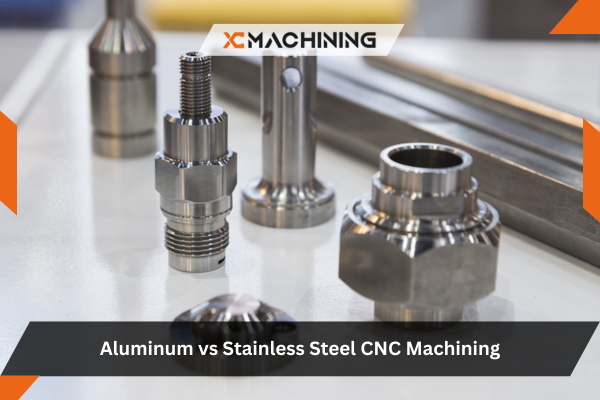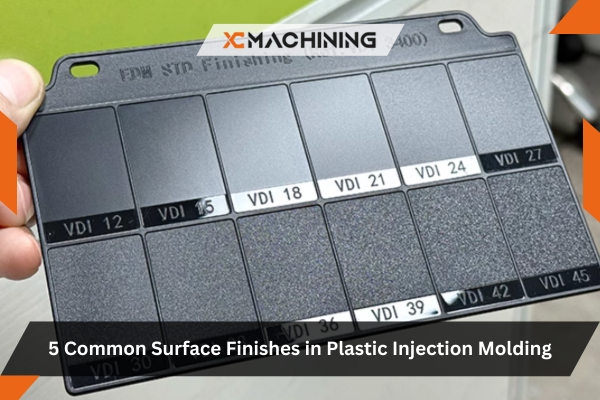When selecting plastic materials for manufacturing, packaging, or industrial applications, the choice between polypropylene and polyethylene often becomes critical. These two thermoplastics dominate the polymer industry, appearing in everything from food containers to automotive parts, yet many people struggle to understand their distinct characteristics. This comprehensive guide examines polypropylene vs polyethylene, exploring their chemical structures, physical properties, applications, and performance differences to help you make informed material selection decisions.
Inhaltsübersicht
Understanding the Basics: What Are These Plastics?
Both polypropylene (PP) and polyethylene (PE) belong to the polyolefin family—polymers created from simple hydrocarbon monomers. Despite this shared heritage, their molecular structures create significantly different material properties that make each suitable for specific applications.
Polyethylene: The Most Common Plastic
Polyethylene is the world’s most widely produced plastic, with global production exceeding 100 million tons annually. Created by polymerizing ethylene monomers (C2H4), polyethylene comes in several density variations that dramatically affect its properties:
Low-Density Polyethylene (LDPE): Features branched molecular chains that don’t pack tightly together, creating a flexible, soft material with lower tensile strength.
High-Density Polyethylene (HDPE): Contains mostly linear molecular chains that pack closely, producing a stiffer, stronger material with better chemical resistance.
Lineares Polyethylen niedriger Dichte (LLDPE): Combines characteristics of LDPE and HDPE through controlled branching, offering good flexibility with improved strength.
Polypropylene: The Versatile Alternative
Polypropylene ranks as the second most produced plastic globally. Formed from propylene monomers (C3H6), its molecular structure includes methyl groups attached to alternating carbon atoms along the polymer chain. This seemingly small difference from polyethylene creates distinct performance characteristics that make polypropylene preferable for many demanding applications.
Polypropylene exists in three main forms based on how the methyl groups arrange themselves: isotactic (regular arrangement on one side), syndiotactic (alternating sides), and atactic (random arrangement). Isotactic polypropylene, with its highly ordered structure, dominates commercial applications due to its superior mechanical properties.

Chemical and Molecular Differences
Understanding the molecular-level distinctions between Polypropylen vs. Polyethylen explains their divergent properties.
The addition of methyl groups in polypropylene’s structure creates several important effects:
Higher melting point: Polypropylene melts at approximately 160-170°C, while polyethylene melts between 120-130°C (HDPE) or 105-115°C (LDPE). This higher melting temperature makes polypropylene suitable for applications involving hot liquids or sterilization processes.
Increased stiffness: The methyl groups create more rigid molecular chains, giving polypropylene greater tensile strength and stiffness than most polyethylene grades.
Lower density: Despite its rigidity, polypropylene is less dense (0.90-0.91 g/cm³) than HDPE (0.93-0.97 g/cm³), making it lighter for equivalent volumes.
Different crystallinity: Polypropylene typically achieves 50-70% crystallinity, while HDPE reaches 60-80%. This affects transparency, with polyethylene generally offering better clarity in film applications.
Physical and Mechanical Property Comparison
When evaluating Polypropylen vs polyethylene for specific applications, several key properties deserve consideration.
Stärke und Langlebigkeit
Polypropylene exhibits superior tensile strength and stiffness compared to polyethylene, making it ideal for applications requiring structural integrity. However, polyethylene—particularly HDPE—offers better impact resistance, especially at lower temperatures. LDPE provides excellent flexibility that polypropylene cannot match, perfect for applications requiring repeated bending or flexing.
Temperature Performance
The higher melting point of polypropylene makes it the clear choice for hot-fill applications, autoclavable containers, and products exposed to elevated temperatures. Food containers, laboratory equipment, and automotive components often utilize polypropylene specifically for this thermal advantage. Polyethylene performs better in cold environments, maintaining flexibility and impact resistance at temperatures where polypropylene becomes brittle.
Chemische Beständigkeit
Both materials demonstrate excellent resistance to most acids, bases, and aqueous solutions. Polypropylene shows slightly superior resistance to organic solvents and oils, making it preferable for chemical storage applications. However, both materials degrade when exposed to strong oxidizing acids or halogens.
Neither material inherently resists ultraviolet radiation well. Extended outdoor exposure without UV stabilizers causes both to become brittle and discolored. Manufacturers commonly add UV stabilizers to outdoor applications for both materials.
Polyethylene Bags vs Polypropylene Bags: Packaging Applications
The packaging industry extensively uses both materials, and understanding polyethylene bags vs polypropylene bags helps businesses select optimal packaging solutions.
Polyethylene Bags: Flexibility and Versatility
Polyethylene dominates the bag and film market due to several advantages:
Superior flexibility: LDPE and LLDPE create soft, flexible bags that conform easily to product shapes and resist punctures from sharp corners or edges.
Better cold resistance: Polyethylene bags maintain flexibility in freezer applications, making them ideal for frozen food packaging.
Excellent sealability: Polyethylene melts at lower temperatures, allowing easier and more reliable heat sealing with less energy.
Kosten-Wirksamkeit: Generally less expensive than polypropylene films of equivalent thickness.
Clarity: LDPE films offer excellent transparency, allowing consumers to see packaged products clearly.
Common polyethylene bag applications include:
- Grocery bags and produce bags
- Food storage and freezer bags
- Garment bags
- Industrial protective packaging
- Agricultural films
Polypropylene Bags: Strength and Heat Resistance
Polypropylene bags serve applications where specific performance characteristics justify their slightly higher cost:
Higher strength-to-weight ratio: Thinner polypropylene films achieve strength equivalent to thicker polyethylene, reducing material costs despite higher per-pound pricing.
Better moisture barrier: Polypropylene’s lower moisture vapor transmission rate protects moisture-sensitive products more effectively.
Heat resistance: Can withstand hot filling processes and higher storage temperatures without deformation.
Superior clarity and gloss: Oriented polypropylene (OPP) films provide exceptional transparency and attractive appearance for retail packaging.
Better printability: Accepts printing inks more readily, producing sharper graphics for branded packaging.
Polypropylene bag applications include:
- Snack food packaging
- Bread bags requiring moisture control
- Textile and apparel packaging
- Hot-fill food pouches
- High-quality retail bags with printed graphics
Polyethylene vs Polypropylene Tank: Industrial Storage Solutions
Chemical and water storage applications frequently debate polyethylene vs polypropylene tank options, with each material offering distinct advantages.
Polyethylene Tanks: Industry Standard for Many Applications
Polyethylene, particularly HDPE, dominates the chemical storage tank market for several reasons:
Excellent impact resistance: HDPE tanks better withstand physical impacts from forklifts, dropped objects, or installation mishaps.
Superior cold temperature performance: Maintains structural integrity and impact resistance in unheated facilities or outdoor winter installations.
Better stress crack resistance: HDPE demonstrates superior environmental stress crack resistance (ESCR), important for tanks storing chemicals under pressure or experiencing thermal cycling.
Wider availability and lower cost: More manufacturers produce polyethylene tanks, offering broader size selections at competitive prices.
Easier fabrication: Lower melting temperature simplifies rotational molding and welding processes, reducing manufacturing costs.
Polyethylene tanks commonly store:
- Water and wastewater
- Agricultural chemicals and fertilizers
- Industrial acids and bases
- Food-grade liquids
- Petroleum products
Polypropylene Tanks: Specialized High-Performance Applications
Polypropylene tanks serve specific applications where their unique properties provide advantages:
Higher temperature resistance: Withstands hotter chemicals and cleaning processes, essential for certain industrial applications.
Superior chemical resistance: Better resists certain aggressive chemicals, particularly organic solvents and oils at elevated temperatures.
Higher stiffness: Maintains shape better under internal pressure, allowing larger tank designs without structural reinforcement.
Lower thermal expansion: Experiences less dimensional change with temperature fluctuations, reducing stress on fittings and connections.
Polypropylene tank applications include:
- Hot chemical processes
- Electroplating solutions
- High-temperature acid storage
- Laboratory chemical storage
- Pharmaceutical manufacturing
Tank Selection Considerations
Bei der Wahl zwischen polyethylene vs polypropylene tank options, evaluate these factors:
Chemical compatibility: Verify both materials resist your specific chemical at operating temperatures. Manufacturer chemical resistance charts provide detailed compatibility information.
Temperature requirements: Choose polypropylene for operations exceeding 60°C or requiring frequent hot chemical exposure.
Environmental conditions: Select polyethylene for outdoor installations in cold climates or areas with significant temperature fluctuations.
Budget constraints: Polyethylene typically costs 10-20% less than equivalent polypropylene tanks.
Physical stress exposure: Polyethylene offers better impact resistance for high-traffic areas or rough handling environments.
Manufacturing and Processing Differences
The choice between polypropylene vs polyethylene also affects manufacturing processes and capabilities.
Processing Characteristics
Spritzgießen: Both materials injection mold successfully, though polypropylene’s higher melting point requires higher processing temperatures and different mold cooling strategies.
Blasformen: Polyethylene dominates blow molding applications due to its superior melt strength and easier processing, particularly for large hollow parts like tanks and containers.
Film extrusion: Both materials produce films, with polyethylene offering better processing stability for blown film while polypropylene excels in cast film and oriented film production.
Tiefziehen: Polypropylene’s higher softening temperature provides better detail reproduction and dimensional stability in thermoformed parts.
Recycling Considerations
Both materials are recyclable, with established collection and reprocessing infrastructure:
Polyethylen: Recycling code #2 (HDPE) and #4 (LDPE). Widely collected and recycled into lumber substitutes, drainage pipes, containers, and bags.
Polypropylen: Recycling code #5. Growing recycling infrastructure, particularly for rigid containers. Recycled into automotive parts, industrial fibers, and storage containers.
Contamination between the two materials during recycling creates problems because their different melting points and properties make them incompatible in recycled blends. Proper sorting is essential for quality recycled materials.

Kostenüberlegungen
Material costs significantly impact product economics, and polypropylene vs polyethylene pricing differences affect material selection decisions.
Polyethylene generally costs less per pound than polypropylene, with prices fluctuating based on crude oil costs and market demand. However, polypropylene’s lower density means equal weights produce more volume, potentially offsetting the higher per-pound cost. Additionally, polypropylene’s superior strength allows thinner-walled designs that reduce total material consumption.
For cost-sensitive applications like disposable packaging or commodity products, polyethylene often provides better value. For applications requiring polypropylene’s specific performance characteristics—heat resistance, stiffness, or chemical resistance—the modest price premium proves worthwhile.
Application-Specific Recommendations
Selecting between polypropylene vs polyethylene ultimately depends on your specific application requirements:
Choose polypropylene when you need:
- Heat resistance above 80°C
- Maximum stiffness and structural integrity
- Superior chemical resistance to solvents
- Lowest density (lightest weight)
- Autoclavable or sterilizable products
- High-clarity rigid packaging
Choose polyethylene when you need:
- Maximum flexibility and elongation
- Superior low-temperature performance
- Best impact resistance
- Easier processing and fabrication
- Lower material costs
- Freezer-grade applications
Schlussfolgerung
The polypropylene vs polyethylene decision significantly impacts product performance, manufacturing processes, and overall costs. While both materials belong to the polyolefin family and share certain characteristics, their molecular differences create distinct property profiles that make each optimal for specific applications.
Polyethylene offers unmatched flexibility, impact resistance, and cold-temperature performance at an economical price point, explaining its dominance in packaging films, containers, and general-purpose applications. Polypropylene provides superior heat resistance, stiffness, and chemical resistance, making it indispensable for demanding applications involving elevated temperatures or aggressive chemicals.
Understanding these differences whether comparing polyethylene bags vs polypropylene bags for packaging needs or evaluating polyethylene vs polypropylene tank options for chemical storage ensures you select the material that best balances performance requirements, manufacturing considerations, and cost constraints. As both materials continue evolving through improved grades and enhanced additives, their complementary strengths will keep them essential to modern manufacturing and packaging industries.
FAQs
Warum quietscht Polypropylen beim Biegen?
Kleine kristalline Bereiche reiben aneinander und erzeugen dabei ein harmloses Geräusch.
Kann Polyethylen in der Mikrowelle erhitzt werden?
Das meiste PE wird in der Nähe von kochendem Wasser weich, also nur in die Mikrowelle stellen, wenn der Behälter als mikrowellengeeignet zertifiziert ist.
Ist recyceltes PP lebensmittelecht?
Ja, aber nur, wenn die Wiederaufbereitung in zugelassenen, geschlossenen Kreislaufsystemen mit entsprechender Zertifizierung erfolgt.
Wie lautet der Recycling-Code für LDPE?
LDPE ist ein Harzkennzeichnungscode 4.
Wie kann ich zu Hause PP von HDPE unterscheiden?
PP sinkt in Franzbranntwein (0,87 g/cm³), HDPE schwimmt knapp unter der Oberfläche.





